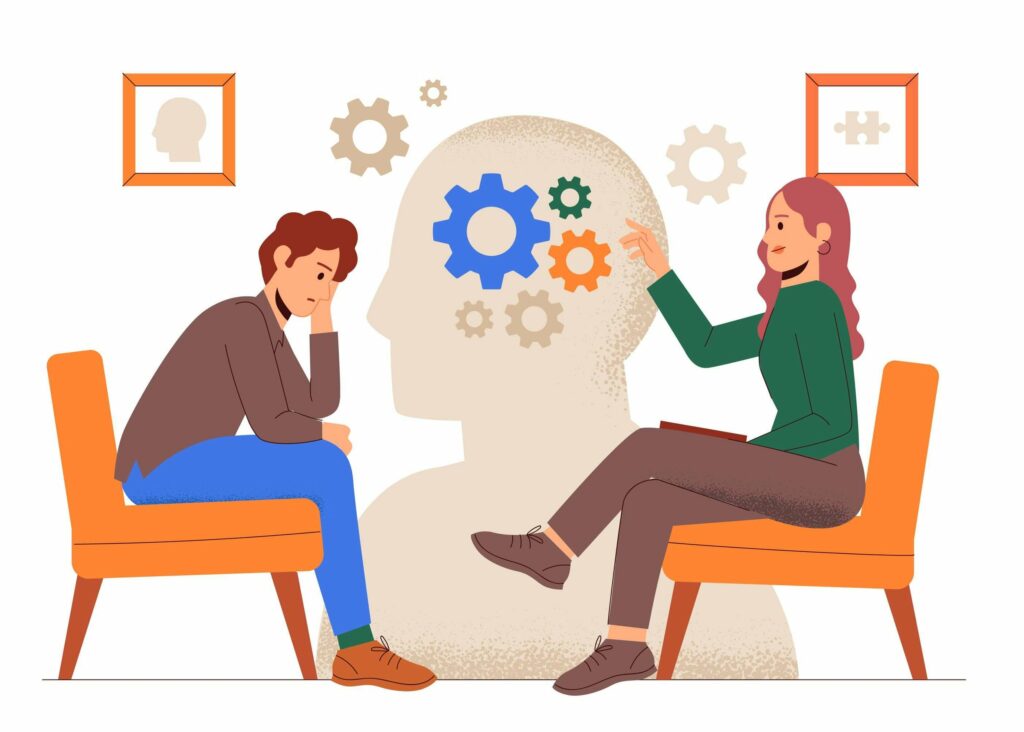Have you ever wished to have that magic button that can quickly resolve deep-seated issues and transform your life? Well, if you’ve been struggling with emotional, mental, or physical issues that seem stubbornly resistant to change, RTT might be what you’re looking for.
In this blog, we’ll dive deep into what RTT Therapy is, how it works, and the techniques it uses to bring about profound changes in a short amount of time. Whether you’re dealing with anxiety, depression, self-esteem issues, or any other challenge, RTT offers a unique approach to healing. So, if you’re curious about a new way to unlock your potential and heal from past traumas, keep reading.
Contents
What is RTT Therapy?
 Rapid Transformational Therapy (RTT) is a type of therapy that combines some of the best parts of other therapies like talk therapy, hypnotherapy, and cognitive behavioral therapy. It was created by Marisa Peer and is designed to help you quickly get to the bottom of your issues and solve them.
Rapid Transformational Therapy (RTT) is a type of therapy that combines some of the best parts of other therapies like talk therapy, hypnotherapy, and cognitive behavioral therapy. It was created by Marisa Peer and is designed to help you quickly get to the bottom of your issues and solve them.
Key Features of RTT:
- Finding the Root Cause: RTT focuses on discovering why you feel or behave the way you do. It uses special techniques to dive deep into your subconscious mind to find these answers.
- Using Hypnosis: In RTT, hypnosis is used to put you in a very relaxed state. This makes it easier to explore your thoughts and feelings and make changes more effectively.
- Direct Suggestions: While you’re relaxed and focused, the therapist gives your mind new, positive messages. These help change negative thoughts and behaviors quickly.
- Quick Changes: RTT is all about making fast changes. It works to solve your problems quickly by dealing with their roots, rather than just easing the symptoms for a while.
RTT is used for a wide range of issues like anxiety, depression, confidence problems, and more. It’s known for helping people see big improvements in a short amount of time.
How RTT Therapy Works

Rapid Transformational Therapy (RTT) uses a distinctive approach to access and heal the subconscious mind, where many of our deepest thoughts and feelings reside. Here’s a simple breakdown of how RTT works:
Accessing the Subconscious
- RTT begins with the therapist guiding you into a deeply relaxed state through hypnosis. This isn’t about losing control but about becoming highly focused and receptive.
- While in this state, your therapist helps you explore and uncover subconscious beliefs that may be influencing your behaviors and emotions. These are often beliefs formed in childhood or during significant events in your life.
Treating the Root Causes
- Once these deep-seated beliefs are uncovered, RTT aims to help you understand them and how they’ve been affecting you. This understanding is key to healing.
- With the guidance of the therapist, you then work to change these subconscious beliefs. This is done using specific techniques like positive suggestions and affirmations that are tailored to counteract the negative beliefs.
Unlike traditional therapy, which often focuses on discussing problems and exploring feelings over many sessions, RTT aims to achieve clarity and resolution in just a few intensive sessions. This method focuses more on transformation and less on ongoing coping.
Techniques Used in RTT Therapy
In RTT Therapy, we utilize a variety of powerful techniques to help you overcome challenges like anxiety, depression, addiction, and issues with self-esteem. Here’s how some of these techniques might be used in your sessions:
- Regression Therapy
In regression therapy, the therapist will guide you to revisit past experiences that have subconsciously shaped your current thoughts and behaviors. For example, if you’re struggling with self-esteem, you might look back to moments in your childhood when you felt criticized or unsupported. - Command Therapy
Command therapy involves direct communication with your subconscious mind. Once you’ve identified negative beliefs or patterns, the therapist will use command therapy to assertively suggest new, positive beliefs. - Visualization
Visualization is another key technique where you’ll be guided to picture positive outcomes and experiences. This could involve imagining yourself successfully handling a situation that would typically make you anxious or visualizing your life free from the habits tied to addiction.
By combining these techniques, RTT provides you with a unique set of tools to directly tackle the subconscious barriers holding you back.
What to Expect in an RTT Session
If you’re considering Rapid Transformational Therapy (RTT) and wondering what your first session might look like, here’s a detailed guide to help you feel more prepared and comfortable.
- Your first RTT session will typically last between 90 minutes to 2 hours.
- During the session, the therapist will ask you a series of questions aimed at uncovering the underlying causes of your concerns. You might be asked about your current symptoms, any significant past experiences, your relationships, and your physical health.
- A significant part of the session involves hypnosis. You’ll be guided into a relaxed state, which is completely safe and very natural—similar to the feeling of daydreaming.
- During hypnosis, they’ll incorporate techniques like regression, command therapy, and visualization, as mentioned earlier.
- At the end of the session, you’ll get a personalized transformation recording for you to listen to for the next 21 days. This recording reinforces the positive changes initiated during the session and helps solidify the new neural pathways in your brain.
Knowing what to expect can help reduce any nerves or uncertainties about starting RTT. Remember, this therapy is a partnership between you and your therapist, with the shared goal of achieving profound and lasting change.



